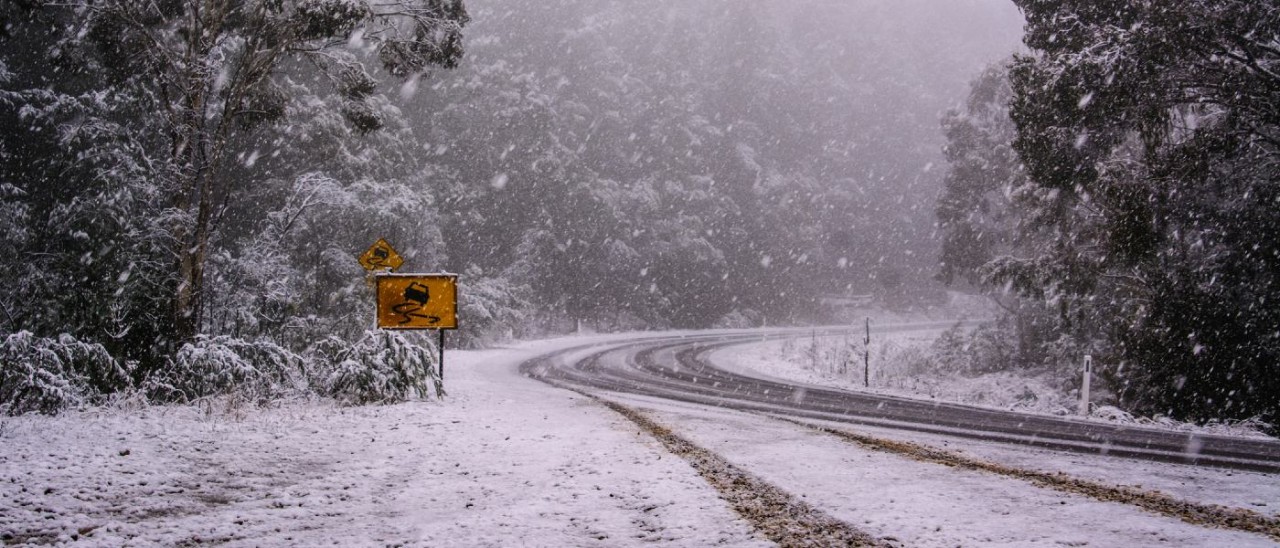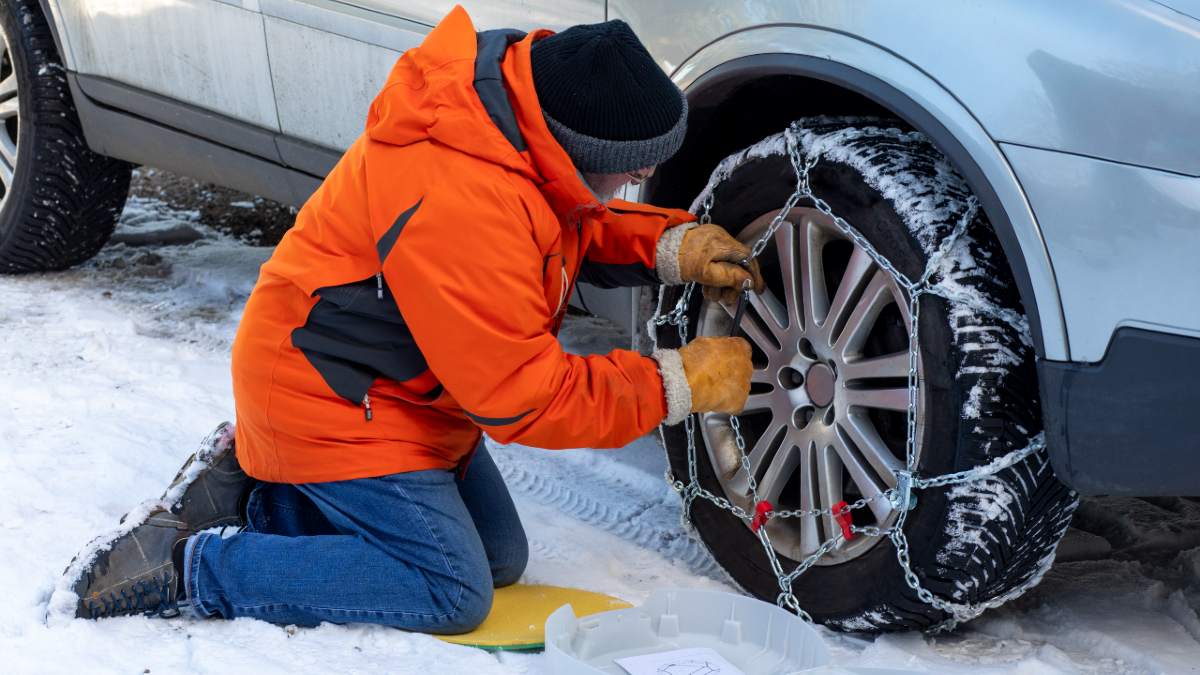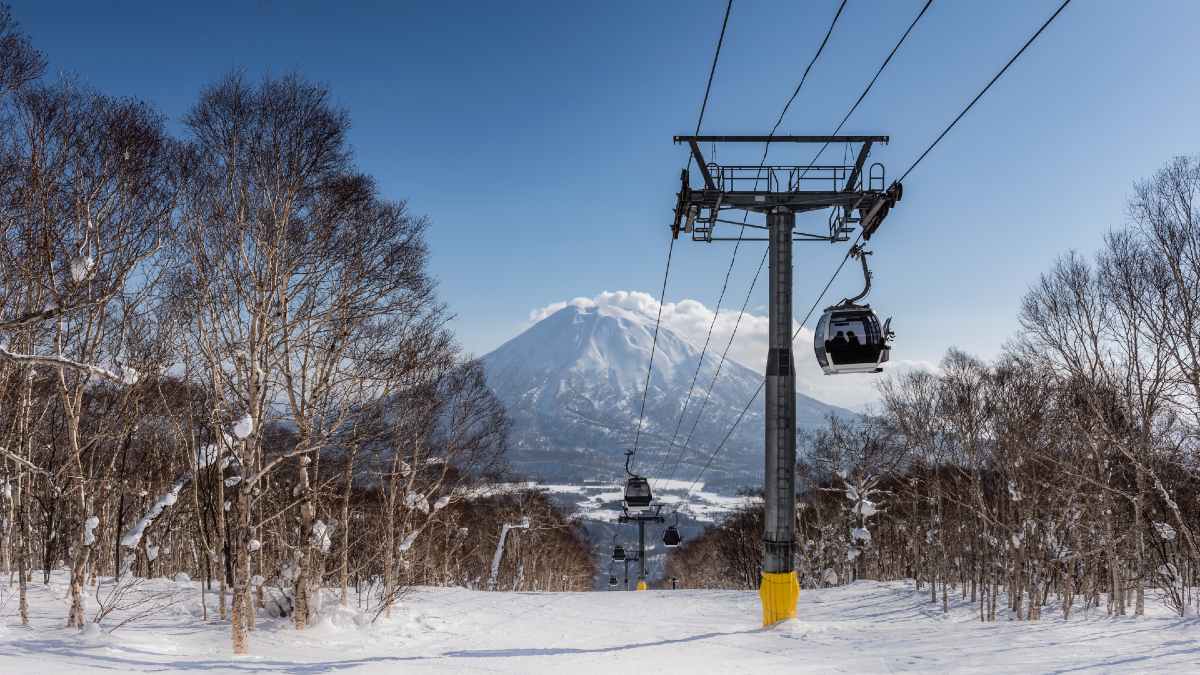When visibility drops, your driving risks rise. Here’s how to stay safe when driving in dangerous conditions including rain, fog, snow, smoke, and glare.
Safety tips for driving in the snow and on icy roads

Make sure your journey to the snow is a safe one this winter. Follow these tips on how to prepare and drive your car in snowy conditions and on icy roads.
Whether it’s tobogganing, snowboarding, skiing or just taking the kids to build a snowperson, the lure of snow sees hundreds of thousands of Victorians head to the mountains in winter. But like skiing or snowboarding, driving in snow and icy conditions requires preparation, patience and skill.
The Victorian snow season at major ski resorts, including Mt Buller, Falls Creek, Mt Hotham and Mt Baw Baw, officially runs from 7 June to 5 October 2025, and even though snow is regularly cleared from the main roads, the surface can still be slippery and treacherous.
If you're heading to the slopes, pack an emergency car kit, check your emergency roadside assistance plan is up to date, and factor in wheel chain hire, resort entry frees, parking, and transfers. Here are some tips to ensure your car is ready for the journey and that you know how to stay safe on the road.
Tips for driving to and from the snow safely

Driving to alpine areas such as Mount Hotham can be fraught, with snow and fog causing poor visibility and dangerous conditions. Image: Getty
Safety tips for driving in the snow and on icy roads
How to prepare your car for snow
Adequate preparation is key to a safe trip to the snow. Travel times from Melbourne to Victoria's alpine resorts range from just over two hours to Lake Mountain and nearly four hours to Mt Buller, so it's important your car is ready for both the long drive and the road conditions. Here is a checklist, which includes remembering to take a car safety and emergency kit:
- Get your car serviced: During your car service make sure the mechanic checks your tyres, brakes, battery, engine and windscreen.
- Consider anti-freeze: Anti-freeze is recommended for your radiator as minimum temperatures regularly fall below zero in Victoria's alpine areas during winter. If you're getting your car serviced, ask the mechanic if your current coolant needs to be replaced with a stronger mix of anti-freeze.
- Check your car battery: A car battery with a low charge can fail in cold conditions and leave you stranded. If in doubt, get a new one.
- Test your climate control systems: Make sure your heating, ventilation, and air conditioning systems are working. You need the heater to keep everyone warm, especially if you get stuck in traffic, and you need the air conditioner to demist the windscreen and ensure you have clear visibility on those challenging alpine roads.
- Fill up on alpine diesel: Diesel vehicles must refuel with an alpine diesel mix before driving in snow and icy conditions. This is because ordinary diesel thickens in sub-zero temperatures. Alpine diesel mix is usually available at service stations near alpine areas during winter months.
- Carry snow chains: Drivers must carry snow chains if driving to a Victorian alpine resort during winter and they must fit them to their vehicle when directed to do so. Pack a tarpaulin to keep you clean and dry as you may have to fit the chains when the ground is slushy or muddy.
- Pack your sunglasses: Snow glare can reduce your visibility and cause fatigue.
- Prepare a car safety and emergency kit: Your car emergency kit should include a mobile phone with charger, water and non-perishable food, a torch with spare batteries, jumper leads, high-vis vest, a spare roadworthy tyre, and first-aid kit.
Finally, don't forget to organise or update your emergency roadside assistance before you leave.

You must carry wheel chains suitable for your vehicle during the snow season and know how to fit them. Image: Getty
Do I need to use snow chains when visiting the snow in Victoria?
In Victoria, all vehicles entering alpine resorts are required to carry snow chains and to use them as directed (either by signage or an authorised officer). This direction applies to 2WD, 4WD and AWD vehicles.
Most resorts further specify that diamond-pattern snow chains must be used.
Snow chains are required for your safety and the safety of others, with substantial fines for non-compliance. Alpine resorts can refuse entry to any vehicle not fitted with chains.
How do snow chains work?
Snow chains work by increasing the traction between your tyres and the road surface, which is typically more slippery during snowy, icy, winter weather.
How do I fit snow chains to my car?
Practise fitting your snow chains prior to starting your journey to the snow, following all instructions from the manufacturer. It’s important that your tyres are in good condition as well.
The chains should be attached while your vehicle is parked on level ground – alpine resorts usually have designated chain-fitting bays for this purpose. Attach the chains to your vehicle’s drive wheels, which are the wheels connected to the engine or engine motors. Having a torch, plastic bag and pair of gloves handy can also help when fitting.
This means front wheels for a front-wheel drive, back wheels for a back-wheel drive, and either front or back wheels for 4WD and AWD vehicles, depending on the vehicle's power distribution. Be aware that rear-wheel vehicles do not perform as well in snow because they are more likely to lose traction.
Alternatively, some snow chain hire businesses will also fit your chains for you.
How to drive with snow chains
Drive slowly and carefully while your chains are attached, avoiding sudden braking or turning. It’s best to keep your speed between 30 and 50km and avoid large puddles where possible. If the chains slip or fall off while driving, pull over where safe to do so and check for damage before refitting the chains.
Remove the chains in a safe location once they are no longer required. Driving on dry roads with your chains on can be both dangerous and cause damage to your chains, tyres and the road surface.
Where can I buy snow chains?
Snow chains can be bought from snow sport and auto retailers. They can also be hired from businesses in towns on the way to alpine resorts.
Consult your vehicle owner's manual before purchasing or hiring chains as not all chains fit all wheels and incorrectly fitted chains can damage your tyre’s wheel arches. A small number of cars cannot fit snow chains at all – these vehicles will generally be prohibited from entering the alpine resorts.

Knowing how to drive in snow and icy conditions will help you reach your destination safely and enjoy your time on the ski fields. Image: Getty
Safe driving tips for going up snowy mountain roads
Driving in snow or icy conditions requires concentration, patience and skill. Check the weather and avoid driving through snow or ice if you can. If you decide to drive and it becomes hard to see the edges of the road, pull over somewhere safe until conditions improve. Make sure you have a mobile phone and charger with you.
Here is a guide to other ways to stay safe when driving in fog or snowy conditions in an alpine area:
- Expect reduced visibility: Snowy conditions can reduce visibility. Decrease your speed and increase the distance between yourself and any drivers in front of you. Braking takes longer in icy conditions.
- Use your fog lights: Don't use your high beams as they can make visibility worse in snowy or foggy conditions. If your car doesn't have fog lights, use the hazard lights with the headlights on low beam.
- Go slow: Operate your vehicle slowly and smoothly with gentle acceleration and braking. Drive in a low gear at a low speed. If you travel too fast, the wheels could lose traction and you could lose control of the vehicle.
- Avoid braking on corners: Slow down before the corner while your vehicle's wheels are straight.
- Be patient: You may find yourself in a long queue when you get near an alpine resort. Stay calm and follow road signs and any directions given by resort staff. If you're delayed in snowy conditions, use the air conditioner to circulate air through the car and help you stay alert.
What is black ice?
Black ice is an invisible layer of ice that forms on roads and can cause vehicles to slide, spin or skid. Because the road looks normal, motorists may not be aware of the hazard.
What to do if you hit black ice or your car slides or skids
If you hit a patch of black ice and start to skid, do not hit the brakes. This could lock the wheels and make the situation worse. De-accelerate and try to keep the steering wheel straight, if possible.
If the back of your vehicle begins to slide, this is the best way to try to regain control:
- Stay calm and keep your eyes focused on the direction of the road.
- Gently steer your front wheels in the direction the vehicle is sliding. For instance, if the back of the car slides to the left, gently turn the wheel to the left.
- As the car straightens out, straighten the steering wheel. The amount you need to turn your wheel is proportional to how far and how fast your vehicle is sliding.
- Be aware that the car may now slide to the right and you'll need to gently turn the wheel to the right. This swaying may occur several times before you regain control.
Black ice can occur on any road given the right conditions, not just in alpine areas. Temperatures at or below freezing combined with precipitation (rain, sleet snow or even mist) increase the possibility of encountering black ice while driving. Driving slowly is one of the best ways to avoid your vehicle sliding in these conditions. If possible, avoid driving if freezing conditions are forecast.
What modern car technologies can enhance safety when driving on black ice and icy roads?
Navigating black ice can be a daunting task for drivers, but modern car technologies can help make it safer. Anti-lock braking systems (ABS), electronic stability control (ESC), and traction control are the key innovations that help drivers maintain control on icy roads. These systems are equipped with sensors that detect when a wheel is losing traction and automatically adjust braking or engine power to prevent skidding.

If you're leaving your car parked in an alpine area, lift up your wipers to stop them freezing to the windscreen. Image: Getty
Safety tips for parking at an alpine resort or in snow
Having reached your destination, follow the road signs or directions of resort staff and leave your car in a marked parking area. Protect your car against the freezing conditions with these preventative measures:
- Park in the sun: If you're a day-tripper, park in a sunny area (if possible) to prevent ice build-up.
- No handbrake: Moisture can freeze the cables and brake linings. Leave the car in gear and turn the front wheels away from a slope.
- Use rubber wheel chocks: Invest in a set of rubber wheel chocks to stop the vehicle moving. Wooden chocks can slip on icy surfaces and rocks may cause damage.
- Lift your wipers: Move the windscreen wipers away from the windscreen or cover them in plastic to prevent them sticking to the windscreen.
Safety driving tips for going down snowy mountain roads
When you return to your car, clear any snow or ice from the roof, windscreen, windows and side mirrors. Visibility is crucial for your return journey, with mist, fog, rain and snow among the challenges of alpine driving.
- Clear icy windscreens: The best way to remove ice from your windscreen is with an ice scraper. Do not use a metal blade, as this will scratch the glass.
- Check all cameras and sensors: Make sure they're clean and free from ice and dirt to ensure driver assistance systems operate correctly.
- Know how to demist: To demist the front windscreen, use the car’s heater and fan at the same time as the air-conditioner.
- Warm your EV: If you have an electric vehicle (EV), pre-warm the car while it is still charging so that you don't deplete the battery by starting the heating when you start driving. This will help to maximise your range.
- Engage low gear: Smooth application of the accelerator and the brakes is the key to driving down safely and being in low gear will make it easier. If you do need to brake, do it in a straight line before the corner.
- Be patient: If the driver in front is slow, stay calm, and keep your distance. You may need to brake, so give yourself plenty of time to stop.
- Give way: Give right of way to cars coming up. It's not a road rule, but it's harder for an ascending vehicle to take off after it has stopped, so be considerate.


